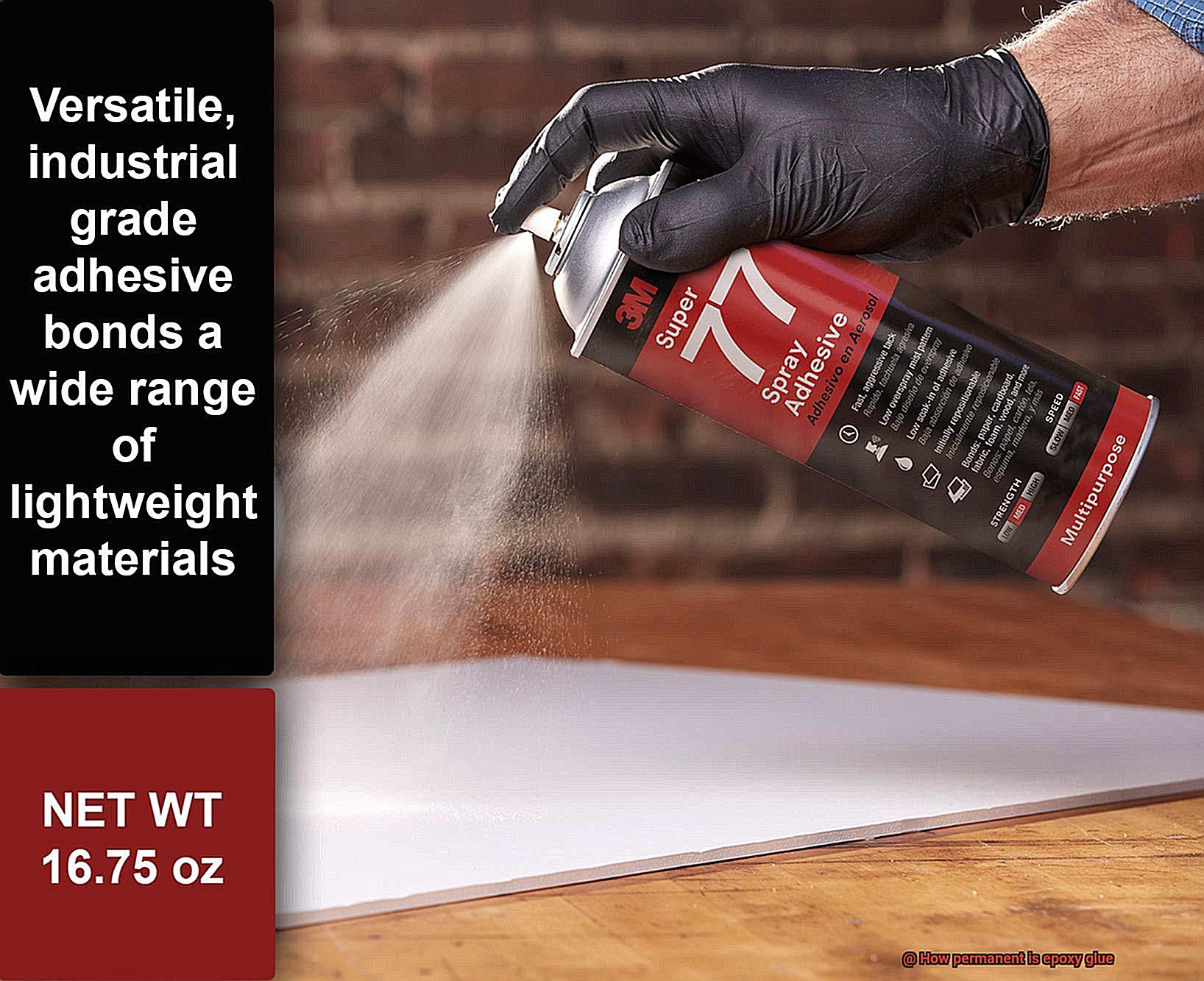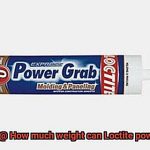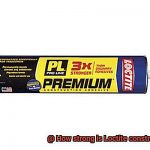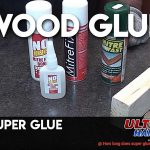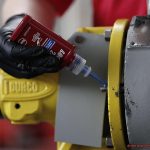Tired of broken stuff that won’t stay fixed?
Enter epoxy glue, the DIY hero to mend cracks and fractures. But is it really as permanent as it claims?
Can it withstand the test of time or will it buckle under pressure? In this blog post, we’ll dive into the world of epoxy glue, exploring its super bonding powers and checking out its long-term durability.
Strap on your safety goggles and come along on this thrilling quest to uncover the truth about epoxy glue’s permanence – trust me, you don’t wanna miss this.
What is Epoxy Glue?
Contents
When it comes to strong and durable adhesives, few can rival the power of epoxy glue. This incredible adhesive has gained a reputation for creating unbreakable bonds between a wide range of materials. If you’re curious about the wonders of epoxy glue, you’ve come to the right place. In this article, we’ll delve into the world of epoxy glue, exploring its composition, applications, advantages, and considerations.
Composition and Working Principle:
Epoxy glue is a dynamic adhesive composed of two components: epoxy resin and a hardener. When these components are combined, a chemical reaction is triggered, resulting in the formation of a cross-linked polymer structure. It is this unique structure that gives epoxy glue its exceptional strength and durability.
Applications:
The versatility of epoxy glue makes it suitable for various applications across industries. From bonding metal and wood to glass, ceramics, plastics, and even fabrics, epoxy glue can handle it all. Whether you’re working on a woodworking project, repairing metal parts, or unleashing your creativity with DIY projects, epoxy glue is a reliable ally.
Advantages:
- Gap-filling properties: Epoxy glue excels at filling in small gaps and irregularities between surfaces, making it perfect for bonding materials with uneven surfaces.
- Water and chemical resistance: Once fully cured, epoxy glue forms a waterproof bond that withstands exposure to moisture without losing its adhesive strength. It also boasts impressive resistance against chemicals and solvents.
- Temperature resistance: Epoxy glue can endure extreme temperatures without weakening or degrading, making it ideal for applications where heat or cold exposure is expected.
- Long working time: Unlike some fast-setting adhesives, epoxy glue provides ample time for accurate positioning and adjustment before setting. This reduces the risk of mistakes and ensures precise results.
Considerations:
While epoxy glue offers remarkable strength and permanence, it’s important to note that once fully cured, the bond is difficult to reverse. Therefore, careful alignment and positioning of materials are crucial before applying epoxy glue.
Additionally, factors such as surface preparation, application technique, and the specific type of epoxy used can influence the permanence of the bond.
Factors Affecting the Permanence of Epoxy Glue
When it comes to adhesive strength and durability, epoxy glue reigns supreme. A favorite among DIY enthusiasts and professionals, epoxy glue is a reliable choice for bonding materials.
However, unlocking the secrets to its permanence is crucial for achieving long-lasting results. In this article, we will explore the factors that affect the permanence of epoxy glue bonds, equipping you with the knowledge to maximize its effectiveness.
Surface Preparation:
Before diving into your epoxy glue project, meticulous surface preparation is essential. Remove all traces of dust, grease, or contaminants that could hinder adhesion. A pristine surface will ensure optimal bond strength and lasting power.
Ratio of Epoxy Resin and Hardener:
Epoxy glues consist of two components – resin and hardener. Precise measurement and mixing of these components, as specified by the manufacturer, are vital. Straying from the recommended ratio can weaken bonds and compromise permanence. So, measure twice and mix once.
Curing Time and Temperature:
Patience is key when it comes to epoxy glue. Allow sufficient time for the bond to cure fully. The curing process can be influenced by ambient temperature and humidity. Follow the manufacturer’s guidelines regarding curing time and temperature for exceptional results.
Material Compatibility:
Different materials have distinct surface characteristics and compatibility with epoxy glue. While epoxy glues can effectively bond metals, ceramics, plastics, and wood, some materials may require additional treatments or primers for enhanced adhesion and longevity.
Environmental Factors:
Epoxy glue bonds are not invincible to environmental influences. Exposure to UV radiation can cause epoxy resins to degrade over time, weakening bonds. Moisture infiltration can compromise adhesive properties, while extreme temperatures can lead to expansion or contraction, affecting bond integrity.
Proper Application Techniques and Handling:
Mastering the art of epoxy glue application is crucial. Follow the manufacturer’s instructions meticulously, applying the glue evenly and avoiding pesky air bubbles. Proper storage and handling, including tightly sealing containers and maintaining suitable temperatures, will contribute to robust and enduring bonds.
Uses of Epoxy Glue
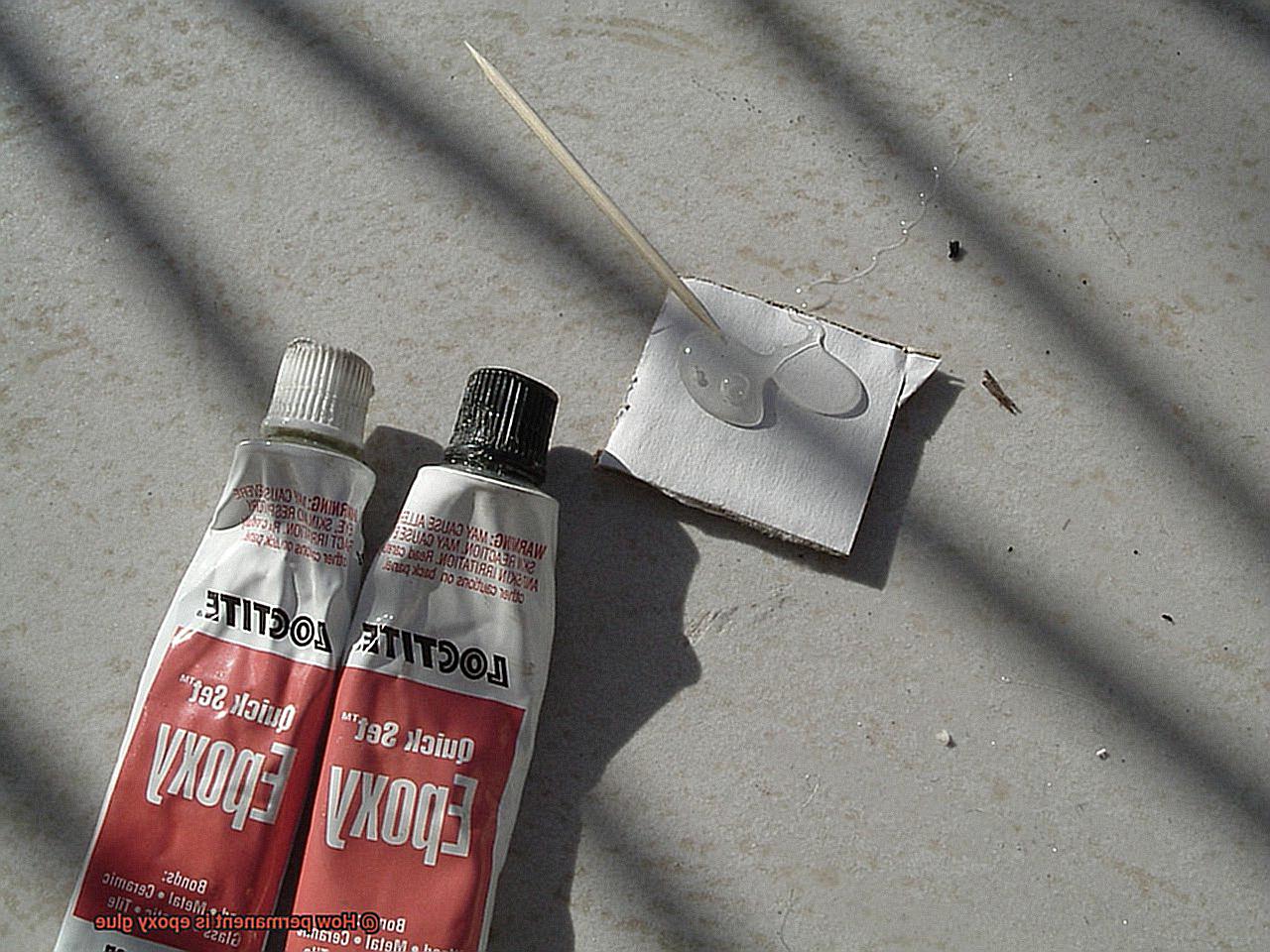
Epoxy glue has revolutionized the adhesive industry with its exceptional strength and durability. This versatile adhesive has found its way into numerous industries, including construction, automotive, crafting, marine, electronics, woodworking, medical, and aerospace applications. Let’s delve into the diverse uses of epoxy glue across these industries.
Construction and Automotive:
The construction industry relies heavily on epoxy glue for bonding wood, metal, concrete, and plastic materials. Its robust bond ensures structural integrity and resistance to heavy loads and harsh environmental conditions. Similarly, in the automotive sector, epoxy glue is a go-to solution for repairing and bonding vehicle parts such as bumpers, panels, and trims. With its unrivaled adhesive properties, it guarantees secure and long-lasting repairs.
Crafting and DIY:
Epoxy glue is a beloved tool in the crafting and DIY community for its ability to bond a wide range of materials effortlessly. It works wonders with glass, ceramics, fabric, and more. Moreover, its versatility allows for tinting or mixing with other substances to create stunning effects in jewelry-making, decor items, and artwork.
Marine Applications:
Marine environments demand adhesives that can withstand water exposure and corrosion. Epoxy glue excels in these conditions, making it ideal for sealing cracks and leaks in boats, repairing components, and bonding various marine structures.
Electronics and Woodworking:
In the electronics industry, epoxy glue plays a crucial role by securely bonding delicate components to circuit boards. Its excellent insulation properties protect against moisture damage and vibrations. In woodworking, this adhesive is the secret behind creating strong joints that stand the test of time.
Medical and Aerospace:
Epoxy glue’s biocompatibility and strength make it invaluable in medical applications such as bonding prosthetics, orthotics, and dental appliances. In the aerospace industry, where extreme temperatures and chemical exposure are common challenges, epoxy glue is used for bonding composite materials, repairing aircraft components, and sealing fuel tanks.
The Chemical Composition of Epoxy Glue
Epoxy glue, the superhero among adhesives, is renowned for its incredible strength and durability. What sets it apart is its unique chemical composition, which gives it its exceptional adhesive properties.
At its core, epoxy glue consists of two main components: an epoxy resin and a hardener. The epoxy resin, a viscous liquid derived from petroleum or plant-based sources, provides the adhesive with its bonding capabilities. It is the hero that forms the foundation of the glue’s strength.
But every hero needs a catalyst, and that’s where the hardener comes in. This component initiates a magical chemical reaction called polymerization when it combines with the epoxy resin. Together, they create a cross-linked network of polymer chains that forms a fortress of adhesive power. This network is what gives epoxy glue its exceptional strength and resistance to heat, chemicals, and moisture.
The hardener itself can take different forms, such as amine-based compounds or anhydrides. Each type of hardener brings its unique characteristics to the table, determining the final adhesive’s strength and resistance to environmental factors.
But the chemical composition of epoxy glue doesn’t stop there. Additives such as fillers, solvents, and stabilizers can further enhance its properties. These additives allow for customization, improving viscosity (how thick or thin it is), curing time (how long it takes to fully harden), and flexibility. They make epoxy glue even more versatile and adaptable to different applications.
However, even with its impressive chemical composition, epoxy glue requires proper surface preparation for optimal bonding. The surfaces to be bonded need to be clean, dry, and free from any contaminants or loose particles. This ensures maximum adhesion and longevity of the bond.
Once fully cured, epoxy glue forms a strong and permanent bond that is difficult to break. It’s like a superpower that creates unbreakable connections between materials. However, it’s important to note that external factors like temperature extremes, exposure to harsh chemicals, and mechanical stress can affect the bond over time. So, it’s always good to consider the specific requirements and limitations of each project.
Strength and Durability of Epoxy Glue
In the world of glue, there is one adhesive that reigns supreme – epoxy glue. With its unmatched strength and unrivaled durability, this adhesive superhero is the go-to choice for a wide range of applications. Whether you’re tackling construction projects, automotive repairs, or unleashing your creativity with crafts, epoxy glue is here to save the day.
The Chemistry Behind the Strength:
Epoxy glue’s exceptional strength stems from its unique chemical composition. When the two main components – resin and hardener – are mixed, they transform through a chemical reaction into an unbreakable bond. This bond possesses an incredible tensile strength, allowing it to withstand intense pulling and stretching forces without yielding. It also exhibits remarkable resistance to shear forces, making it ideal for materials that undergo constant movement and stress.
Durability Against All Odds:
But strength isn’t the only superpower epoxy glue possesses. Once fully cured, it becomes a formidable opponent against environmental challenges. Moisture, heat, and chemicals are no match for epoxy glue, as it maintains its adhesive properties under extreme conditions. It can triumph in scorching temperatures and face off against water without losing its grip. Furthermore, epoxy glue boasts outstanding resistance to impact and shock, effortlessly absorbing and distributing energy from sudden impacts to prevent cracks or breakages in bonded materials.
Versatility and Bonding Abilities:
Epoxy glue’s versatility is another testament to its superhero status in the adhesive world. It forms strong bonds with an extensive range of materials including metals, plastics, ceramics, wood, and glass. This remarkable versatility makes it an indispensable ally for repairing broken items or crafting artistic masterpieces.
Tips for Optimal Results:
To unlock the full potential of epoxy glue, following manufacturer instructions and properly preparing the surfaces is paramount. The stronger the fit between bonded surfaces, the mightier the bond will be. Applying adequate pressure during the curing process can also enhance bond strength.
How to Maximize the Permanence of the Bond
Are you looking to create a bond that stands the test of time? With epoxy glue, you can achieve a strong and permanent bond when you follow these key steps. In this guide, we’ll walk you through the process of maximizing the permanence of your epoxy glue bond, ensuring that your projects remain durable and reliable for years to come.
Proper Surface Preparation for a Strong Bond:
To create a strong bond with epoxy glue, proper surface preparation is essential. Start by cleaning the surfaces you plan to bond, removing any dirt, dust, or grease. Use a solvent or degreaser to ensure a clean and contaminant-free surface. Next, roughen up the surfaces with fine-grit sandpaper or a chemical etching solution. This step creates microscopic grooves that give the epoxy glue something to grip onto tightly, enhancing the strength of the bond.
Precise Mixing and Application Techniques:
Achieving a strong epoxy glue bond starts with precise mixing and application techniques. Follow the manufacturer’s instructions carefully when mixing the epoxy components, ensuring they are combined thoroughly.
Inadequate mixing can result in weak spots in the bond. Apply the epoxy glue evenly on both surfaces using a spatula or brush, ensuring complete coverage. Press the surfaces together firmly and hold them in place for a few minutes to allow the initial bonding to occur.
Patiently Allow for Complete Curing:
Patience is key when it comes to maximizing the permanence of your epoxy glue bond. After bonding the surfaces, allow them to cure undisturbed for the recommended time specified by the manufacturer.
Rushing the curing process can compromise the strength and longevity of the bond. During curing, the epoxy goes through a chemical reaction that transforms it into a strong and permanent adhesive. By allowing sufficient curing time, you ensure that the bond reaches its maximum strength.
Choosing the Right Epoxy Glue for Longevity:
Not all epoxy glues are created equal, and selecting the right one for your project is crucial for maximizing bond permanence. Consider the specific conditions your bonded item will be exposed to.
If you anticipate high temperatures or UV light exposure, choose an epoxy glue that is specially formulated to withstand these conditions. This ensures that your bond remains strong and doesn’t weaken over time due to environmental factors.
Limitations of Epoxy Glue
Epoxy glue, also known as two-part epoxy adhesive, is a popular choice for bonding various materials due to its strength and durability. However, it is important to be aware of its limitations before using it in your projects. Let’s explore some of the key limitations of epoxy glue and how they may impact your application.
Firstly, one limitation of epoxy glue is its difficulty in handling. It requires precise mixing of two components, often resin and hardener, in the correct ratio. If the ratio is not accurate, the glue may not set properly, resulting in weak bonds or no bond at all. This can be frustrating, especially for beginners or those unfamiliar with working with epoxy glue.
Another limitation is the relatively long curing time of epoxy glue. Unlike instant adhesives, epoxy glue typically takes several hours to dry and fully cure. This can be inconvenient if you need to use the bonded item right away or if you are working on a time-sensitive project.
Moreover, epoxy glue may not be suitable for all materials. While it works well on hard surfaces such as metal, wood, or ceramics, it may not adhere well to certain plastics or rubber materials. It is important to test the compatibility of epoxy glue with your specific materials before proceeding with the bonding process.
Additionally, once epoxy glue has cured, it becomes rigid and inflexible. This means that it may not be suitable for applications where there is a lot of movement or stress on the bond. For example, if you are bonding materials that will be subjected to constant bending or stretching, epoxy glue may not provide the necessary flexibility.
Furthermore, it is essential to handle epoxy glue with caution as it can be toxic if mishandled. The chemicals used in epoxy glues can cause skin irritation and respiratory problems if proper safety precautions are not taken. It is crucial to use epoxy glue in a well-ventilated area and wear protective gloves and goggles to protect yourself from any potential harm.
Lastly, epoxy glue may not be suitable for high-temperature applications. Some epoxy glues have temperature limitations and may degrade or lose their bond strength when exposed to high heat. It is crucial to consider the temperature requirements of your project and choose an epoxy glue that can withstand the intended conditions.
quVzSy5sJIs” >
Also Read: How to Glue Fiberglass to Metal?
Conclusion
In conclusion, epoxy glue is a force to be reckoned with. Its formidable strength and resilience make it the go-to adhesive for countless applications. By combining epoxy resin and a hardener, this chemical marvel forms unbreakable bonds that withstand the test of time.
Epoxy glue’s secret weapon lies in its ability to fill gaps and resist the harshest elements. Water, chemicals, extreme temperatures – you name it, epoxy glue can handle it. And with ample working time for precise application, you can trust that your project will be flawless.
But let’s not forget about the importance of proper preparation. Surface readiness is key to maximizing the permanence of epoxy glue bonds. Mix with precision, apply with finesse, and give it enough curing time to solidify its grip. Choosing the right epoxy glue for specific conditions and regular maintenance are also crucial factors to consider.
Of course, even superheroes have their limitations. Epoxy glue demands accuracy in mixing ratios and patience during its relatively long curing process. It may not adhere well to certain materials or provide the flexibility needed for constantly moving or stressed applications. And let’s not overlook its potential toxicity – handle with care.
Yet despite these boundaries, epoxy glue remains an indispensable tool across industries like construction, automotive, marine, electronics, woodworking, medicine, and aerospace. With a mindful approach and respect for its limitations, you can unleash the power of epoxy glue to mend broken items and embark on exciting DIY projects.
So don your safety goggles and embrace the might of epoxy glue.

